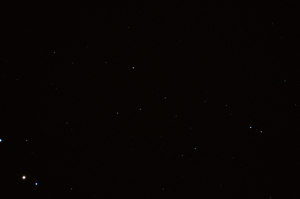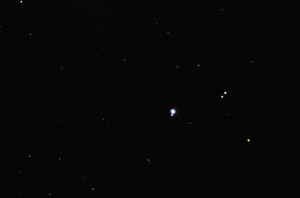Tonight was clear. Unbelievably clear. It was…so superbly clear it put me at peace again. Alas, it was also unbelievably windy, which curtailed my fantastic session a bit.
All visual tonight, I didn’t fancy trying any imaging with all that wind. So I dipped in and around Cassiopeia, and the rich star fields were just great. η Cas was beautiful, both in the wide field set against all the stars, and in higher magnifications. So much so, I would be tempted to say set against the sparkling backdrop, it was more impressive than even Albireo. And I never thought I’d ever say that! To my eyes, the colours were a diamond white and russet red. That is another great thing about doubles, hardly anyone really agrees on the colours, and I’ve read reports on doubles I’ve seen and wondered what on earth the observers were talking about.
Sweeping through many clusters, too, I don’t think I’ve ever seen so many stars in the eyepiece. Every single thing I looked at was startlingly amazing. Every thing. It was one of those nights. If not for the wind, I’d have done some images (including setting up the film camera, taking a long exposure of my ‘scope taking long exposures of something.)
Clusters in Perseus, Boötes, Ophiuchus, with even the Pleiades getting a look in, and I have to say, that took me by surprise. Quite the large fuzzy patch, and it confused me for a minute as to what it was. Andromeda was extra bright, though I can never get a decent view of it. Maybe I just need to view it for longer, and tease out more and more details from it as the night progresses.
I dragged my good lady out for quite a few of these, too. Always worth sharing. And there was also one more target I looked for, one which, to my ailing memory I don’t think I’ve ever seen before. In fact, I am sure I’ve never seen it before. The ice giants are awake, and while Neptune is hidden from me by my own house, Uranus is easily visible. And what another ace sight it was. A lovely extended blue-ish disc, silent and graceful. Wonderful to see it, truly. You can really tell the difference between planets and stars, even those outer planets that are far, far away.
A fine night’s observing, and a pity it didn’t last longer, but the picking up of the wind speed was noticable while looking through the eyepiece.
β and 17 Cyg on flickr taken a few weeks ago.




